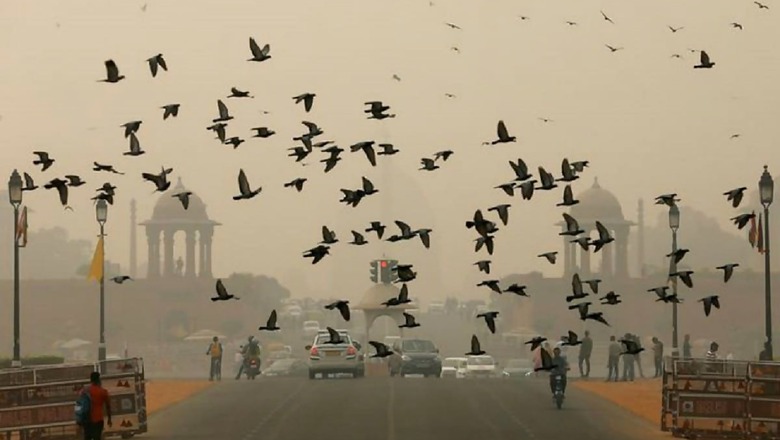
views
The Centre has taken a slew of measures in the last six years to curb pollution, the environment ministry said on Tuesday, after Delhi’s Deputy Chief Minister Manish Sisodia blamed the Union government for its “inaction on the issue”. Reacting to Sisodia’s attack as Delhi’s air quality entered the “red” zone, the ministry said the government believes in working towards getting rid of air pollution.
“Central government believes in working to end pollution. The government has taken various anti-air pollution initiatives in the last six years, which include construction of the Eastern and Western peripheral expressways, which has reduced pollution by preventing 60,000 undestined heavy vehicles (trucks) passing through Delhi every day,” ministry spokesperson Gaurav Khare said. Earlier in the day, Sisodia attacked the Centre, saying all of north India would have to pay for its “inaction on the issue of air pollution”.
“Pollution and stubble-burning are not just issues pertaining to Delhi but this affects the whole of north India. It is a matter of regret that the central government did not take any action during the year and now, the whole country will pay for it,” the Aam Aadmi Party (AAP) leader said. Responding to his allegations, Khare said the environment ministry shut down the Badarpur power plant, which directly reduced pollution, and introduced BS-VI standard-compliant vehicles and fuel with an investment of Rs 65,000 crore, which reduced vehicular pollution to a great extent.
“Machines for stubble-cutting worth Rs 1,400 crore have been provided to Punjab and Haryana farmers and it has resulted in reduction of about 15 per cent and 20 per cent pollution from stubble-burning respectively,” he said. Listing all measures taken by the Centre in this regard, Khare said the zig-zag technology in 2,800 brick klins in the National Capital Region (NCR) was introduced, which resulted in lesser pollution, 2,600 NCR industries were brought on piped natural gas (PNG), the Construction and Demolition Waste Management Rules, introduced for the first time in 2016, reduced dust pollution and hundreds of dust suppressants and water sprinkling vehicles were provided by the Delhi Development Authority (DDA).
Delhi’s air quality hit an eight-month low and was recorded just a notch above the “very poor” category on Tuesday. The air quality index (AQI) of the city hit “very poor” levels in the morning and stood at 306 at 11 am. Thereafter, the pollution levels dipped slightly due to an improvement in the ventilation index.
An AQI between 0 and 50 is considered “good”, 51 and 100 “satisfactory”, 101 and 200 “moderate”, 201 and 300 “poor”, 301 and 400 “very poor”, and 401 and 500 “severe”. “The development of strong surface-level inversion and sudden local, calm surface wind conditions led to a low-ventilation coefficient and accumulation of pollutants near the surface,” the System of Air Quality and Weather Forecasting and Research (SAFAR) said. Around 675 farm fires were observed in Punjab, Haryana and other border regions of the national capital on Monday, but the wind direction was not favourable for transport of pollutants. Hence, only a marginal contribution in Delhi’s PM2.5 concentration is expected, the SAFAR said.
Read all the Latest News and Breaking News here




















Comments
0 comment